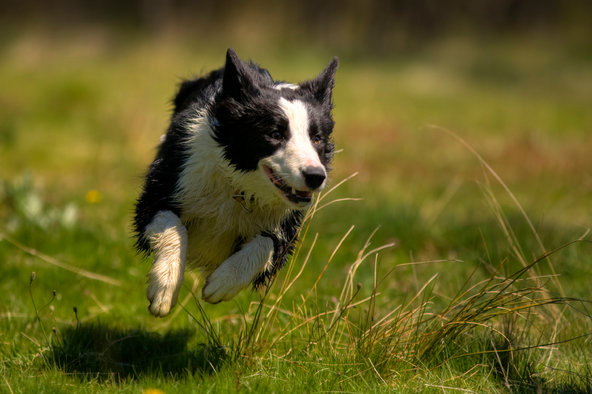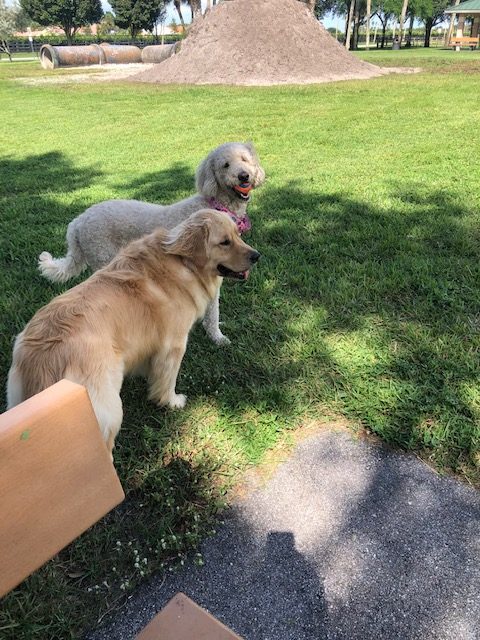
As dog owners, we’ve often wondered if dog’s have psychic abilities. For example, when I pull a bag of garbage out of the trash can, Nigel and his visiting buddy, Nika, immediately dash to the door in my office, which is nearest to our outside garbage container. Is that precognition or simply pattern recognition? Actually, I tend to think it’s the later. Dogs learn to recognize patterns of human behavior. We usually take Nigel to the dog park at 3 p.m. and everyday he starts nudging us by 2:45 to get ready. Is he psychic or does he have some way of telling time?
Now to complicate the issues comes a study suggesting that dogs are…what?…in tune with the Earth’s magnetic field. In other words, when dogs are going from one place to another, it seems that they might be using the same tactics as migrating birds…following the planet’s magnetic field. So how does that work?
Researcher Kateřina Benediktová said she recognized that a dog’s nose no doubt plays a big part in how they get from one place to another, but her study suggests something else might be involved.
“We know about impressive dogs’ navigational abilities from anecdotal reports,” said Benediktová, who lead the study, and spoke to This Dog’s Life in an email. “Some previous studies have indicated ‘a magnetic sense’ in dogs. However, there still is a little known about the significant advantage of this behavior.”
Benediktová along with Hynek Burda, a sensory ecologist at the Czech University of Life Sciences Prague, studied 27 dogs over a three-year period, having them take hundreds of trips to a wooded forest area. The dogs, many of them hunting canines, would roam around the area, picking up on scents and seeing where their noses took them. When owners would call them to come back, these dogs would either use a “tracking” behavior in which they retraced their steps or a “scouting” behavior in which they would race back on a completely new route, charging through bushes and around obstructions.
The researchers studied the 223 times the dogs used “scouting” and found that about 75 percent of the time, they ran about 65 feet along a north-side axis before they went back to their owners. In these instances, the dogs’ return route was more direct and quicker. The authors believe that by running along the north-side axis, the dogs were better able to get their bearings.
“We suggest that this never previously recorded orientation behavior serves to bring the mental map into register with the magnetic compass and to determine its polarity,” says Benediktová, adding, “We propose that the ‘compass run’ serves to establish the heading of the animal and/or helps to align its cognitive map of space when homing using novel routes.”
To ensure the dogs couldn’t “cheat” researchers brought the dogs to unfamiliar areas in the wood, so they couldn’t rely on familiar landmarks; had owners hide and believed scent didn’t play a big role, as the wind wasn’t blowing the owners’ scent in the dogs’ direction
The team believes the north-south axis was used as a reference to help determine the most direct back to their owners.
Or maybe dogs are talented remote viewers (clairvoyants) and can psychically find their owners or even tell when their owners are coming home, even when no pattern exists.
Biologist Rupert Sheldrake, in fact, published a paper in a scientific journal in 2000 suggesting that dogs have such an ability. More on that here.
One thing we know for sure: The dogs are not telling us how they do it!













